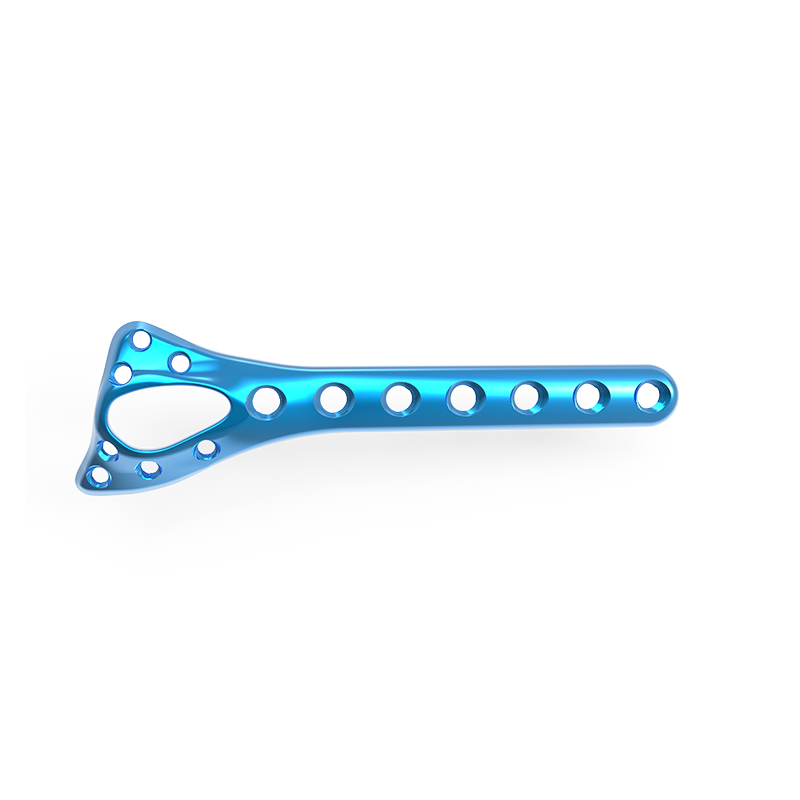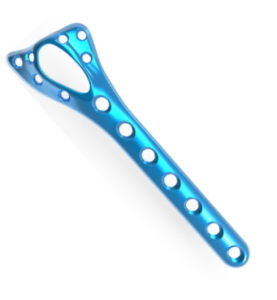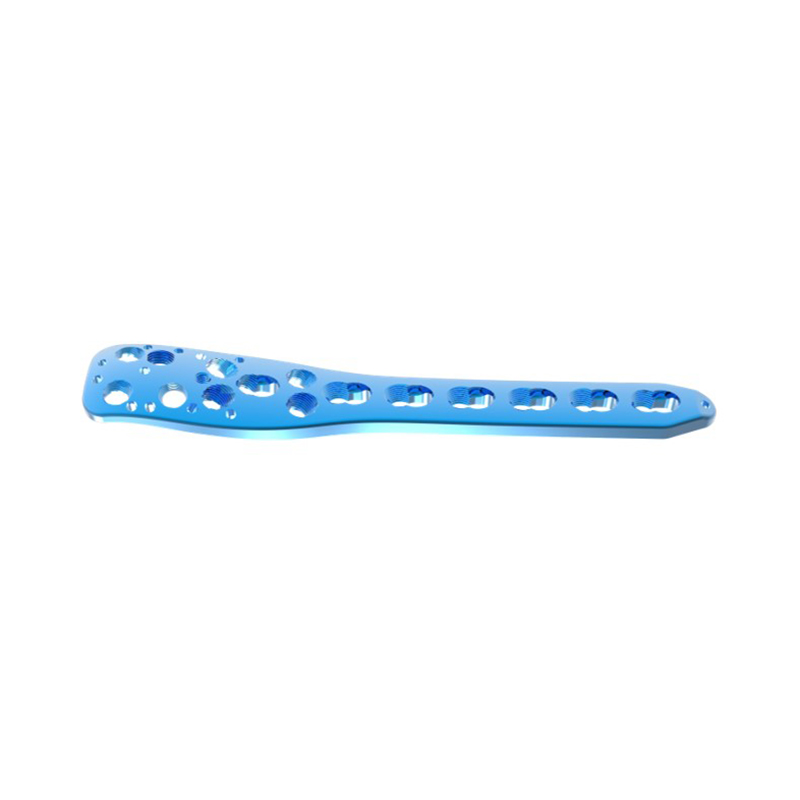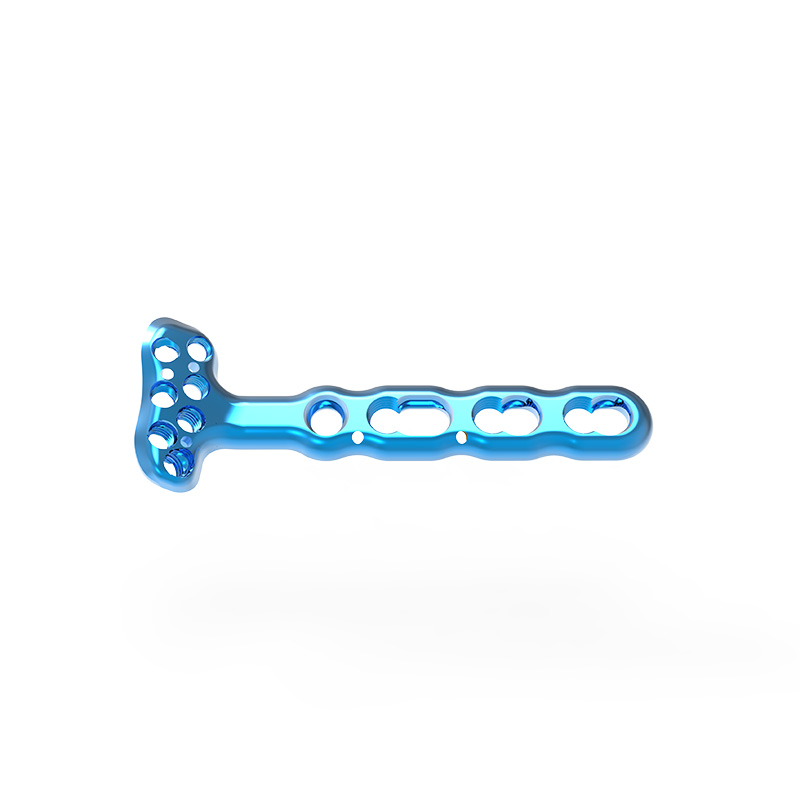DDR Locking Compression Plate
DDR Locking Compression Plate Medical Implants
Locking Plate Description
The proximal portion of the plate is placed just radial to the convex surface of the radial shaft.

Fixed-angle locking screw holes

locking plates implants Indications
Buttress for Dorsal Fractures
Corrective Osteotomy
Dorsal Comminution
locking plates implants Parameter
| DDR Locking Compression Plate | 3 holes x 59mm (Left) |
| 5 holes x 81mm (Left) | |
| 7 holes x 103mm (Left) | |
| 3 holes x 59mm (Right) | |
| 5 holes x 81mm (Right) | |
| 7 holes x 103mm (Right) | |
| Width | 11.0mm |
| Thickness | 2.5mm |
| Matching Screw | 2.7 Locking Screw for Distal Part
3.5 Locking Screw / 3.5 Cortical Screw / 4.0 Cancellous Screw for Shaft Part |
| Material | Titanium |
| Surface Treatment | Micro-arc Oxidation |
| Qualification | CE/ISO13485/NMPA |
| Package | Sterile Packaging 1pcs/package |
| MOQ | 1 Pcs |
| Supply Ability | 1000+Pieces per Month |
There are a few contraindications to consider when using a DDR Locking Compression Plate (DCP):Active infection: If the patient has an active infection in the area where the plate will be placed, it is generally contraindicated to use the DCP. Infection can complicate the healing process and increase the risk of implant failure.Poor soft tissue coverage: If the soft tissue surrounding the fracture or surgical site is compromised or does not provide adequate coverage, the DCP may not be appropriate. Good soft tissue coverage is important for proper wound healing and to minimize the risk of infection.Unstable patient: In cases where the patient is medically unstable or has significant comorbidities that may affect their ability to tolerate the surgical procedure, the use of a DCP may be contraindicated. It is important to consider the overall health of the patient and their ability to handle the surgical stress before proceeding with any instrumentation.Skeletal immaturity: The use of a DCP in growing children or adolescents may be contraindicated. The growth plates in these individuals are still active and the use of rigid plates may interfere with normal bone growth and development. Alternative methods, such as flexible or non-rigid fixation, may be more appropriate in these cases.It is important to note that these contraindications may vary depending on the specific patient, the fracture or surgical site, and the surgeon's clinical judgment. The final decision on whether or not to use a DDR Locking Compression Plate will be made by the orthopedic surgeon after a comprehensive evaluation of the patient's condition.












